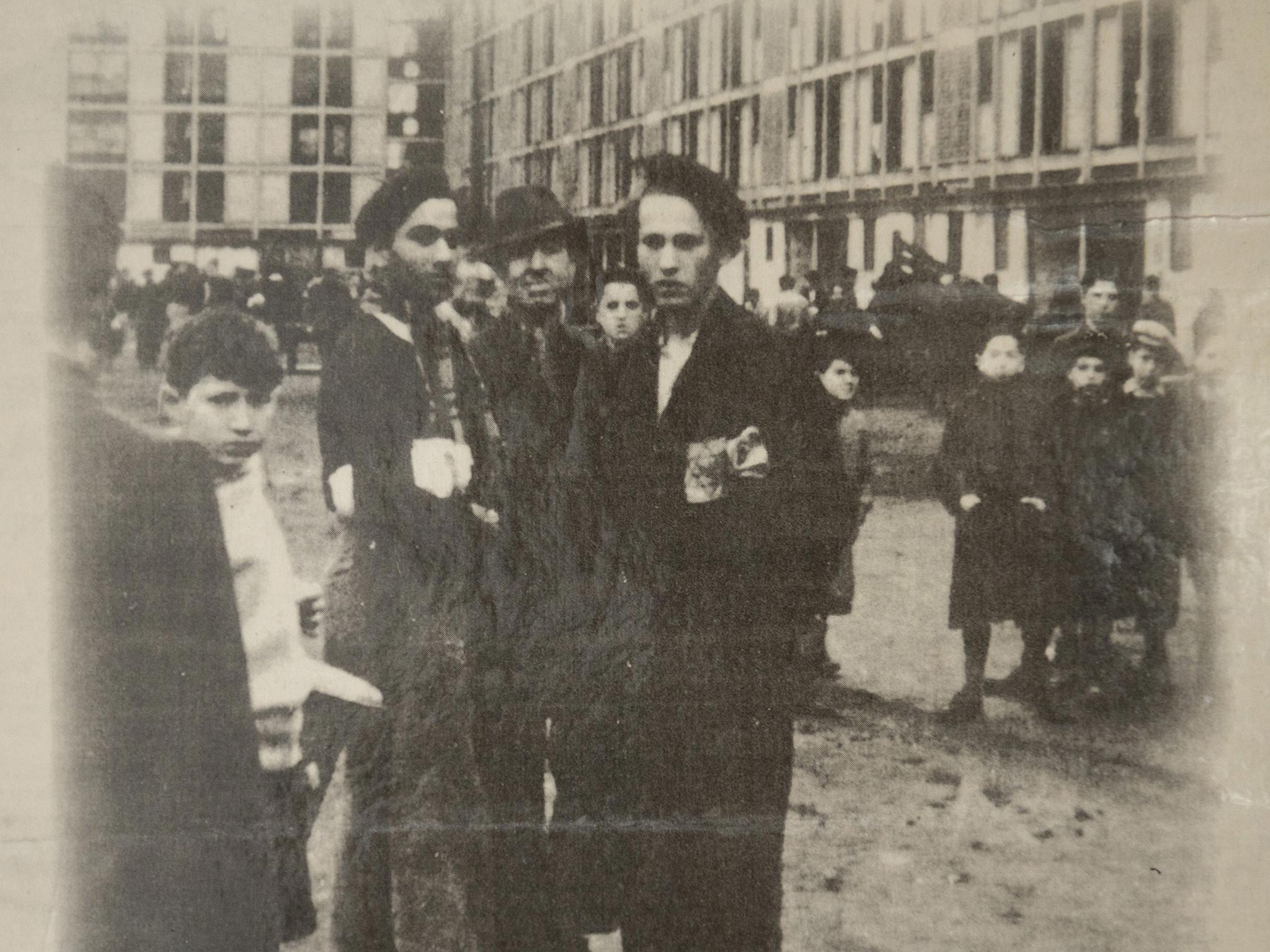Leo Bretholz: Holocaust survivor who made a daring escape from a train and later campaigned for reparations from French railway
Of the 1,000 people on his train, he said, only five survived the war

Leo Bretholz made a daring escape from the Nazis by jumping off a moving train en route to Auschwitz. Decades later he led a campaign for reparations from the French railway that carried thousands of others to their deaths.
Born to a Jewish family in Vienna, Bretholz became a leader among activists who have called for reparations from governments and companies in Europe that aided the Nazi regime in its execution of the Final Solution. The controversial issue of reparations has figured prominently in recent considerations of a planned light-rail system in Maryland, where Bretholz settled.
The SNCF, the French railway system that historians say carried 76,000 people to Nazi camps, is the majority owner of Keolis, one of the companies invited to bid on the multibillion-dollar project. Bretholz was scheduled to testify before the Maryland General Assembly’s House Ways and Means Committee on a bill that would prevent Keolis from winning the contract if the SNCF does not pay reparations to victims.
Bretholz had frequently recounted in speeches before lawmakers, schoolchildren and others his story of persecution and survival. He was born in 1921, to Polish immigrants in Vienna. His father, a tailor and amateur Yiddish actor, died when Bretholz was a boy. His mother supported their surviving children by doing embroidery. At his mother’s insistence, Bretholz fled Austria after it was annexed by Germany in 1938. He recounted travelling by rail to Trier, in western Germany, and then swimming across the Sauer River to Luxembourg. There he was met by refugee workers who smuggled him into Belgium.
After the Germany invaded Belgium in 1940, Bretholz was deported to France. He entered Switzerland in 1942 but was returned to France and ultimately to the Drancy transit camp north-east of Paris. From there, he and thousands of others were sent east, bound for the death camp at Auschwitz, in what is now Poland. Years later, in testimony before the US House Foreign Relations Committee, he recalled the conditions on the train.
“For the entire journey, SNCF provided what was one piece of triangle cheese, one stale piece of bread and no water,” he recalled. “There was hardly room to stand or sit or squat in the cattle car. There was one bucket for us to relieve ourselves. Within that cattle car, people were sitting and standing and praying and weeping, fighting.”
In a recorded interview preserved by the US Holocaust Memorial Museum, Bretholz recalled his escape through a cattle car window on 6 November 1942. He and a friend removed articles of clothing, soaked the clothing in human waste from the bucket and repeatedly wrung out the moisture to increase the fabric’s strength. The two men then used the clothes to force open the bars.
“We kept twisting the wet sweaters tighter and tighter, like a tourniquet,” he told the House committee. “The human waste dripped down our arms. We kept going for hours, until finally there was just enough room for us to squeeze through. It was night. I went first, and Manfred helped me climb out the tiny window... He followed me, and we held on tight so as not to slip and fall beneath the train, and waited for it to take a curve and slow down. Then we jumped to our freedom.”
Bretholz lay in a ravine and then moved into a village, where he received aid from a priest. He said that the Resistance provided him with false identification documents. He worked with the Resistance, falsifying documents and scouting Germans, and later helped refugees in France after D-Day. Of 1,000 people on his train to Auschwitz, Bretholz said, only five survived the war. Many of his relatives also perished.
He moved to the US in 1947, settled in the Baltimore area and ultimately became a US. citizen. He worked for much of his career in sales; at various times he sold textiles and cemetery plots and later managed bookshops.
He wrote a memoir, Leap into Darkness: Seven Years on the Run in Wartime Europe, with the journalist Michael Olesker. While acknowledging the extraordinary suffering of the victims of Nazi persecution, opponents of reparations note that many companies and individuals were coerced into co-operating with the Nazi regime; those people, too, faced threats of deportation or death. Critics also note the essential impossibility of undoing the damage of the past. But Bretholz was insistent.
“The train to Auschwitz was owned and operated by SNCF,” he said before the House committee. “They were paid by the Nazis per head and per kilometre to transport innocent victims across France and ultimately to the death camps.” He handed committee members a copy of an invoice. “SNCF pursued payment on this bill after the liberation of Paris,” he said, “after the Nazis were gone.”
Bretholz often said that there was one victim he could not forget. She was an elderly woman on his cattle car. “If you get out,” she told him, shaking her crutch as he made his escape, “maybe you can tell the story. Who else will tell the story?”
Leo Bretholz, salesman and Holocaust survivor: born Vienna 6 March 1921; married 1952 Florine Cohen (died 2009; two daughters and one son); died Pikesville, Maryland 8 March 2014.
© The Washington Post
Join our commenting forum
Join thought-provoking conversations, follow other Independent readers and see their replies
Comments
Bookmark popover
Removed from bookmarks